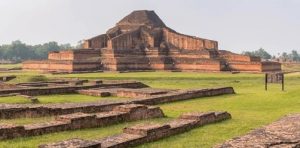Bangladesh, a treasure trove of Bangladesh’s Natural and Historical Marvels, beckons travelers to embark on a journey through its verdant landscapes and ancient ruins. With its rivers crisscrossing the fertile plains and stories of old whispering through the leaves of its dense forests, Bangladesh offers a unique blend of experiences that captivate the soul.
Introduction to Bangladesh’s Natural and Historical Marvels
Nestled in the heart of South Asia, Bangladesh is often described as the land of rivers and stories. Its history is as rich and diverse as its landscapes, ranging from lush greenery and mighty rivers to serene beaches and captivating tea gardens. But what truly sets Bangladesh apart is its warm-hearted people and vibrant cultural tapestry, making it a must-visit destination for those seeking to explore the road less traveled.
The Land of Rivers and Stories
The rivers of Bangladesh are the lifelines of the nation, shaping its culture, economy, and geography. The Ganges, Brahmaputra, and Meghna rivers converge here, creating the world’s largest delta. These waterways are not just physical entities; they are woven into the fabric of the country’s folklore and traditions.

Why Visit Bangladesh’s Natural and Historical Marvels?
From the world’s largest mangrove forest, the Sundarbans, to the longest natural sea beach at Cox’s Bazar, Bangladesh is a country of superlatives. But beyond these titles, it’s the opportunity to witness a harmonious blend of nature and culture that truly entices the traveler. The hospitality of its people, the spicy melange of its cuisine, and the tranquility of its natural sites offer an authentic experience far removed from the commercial tourist trails.
Top Natural Wonders of Bangladesh’s Natural and Historical Marvels
Sundarbans: The Lush Mangrove Forest
The Sundarbans, a UNESCO World Heritage Site, is a marvel of nature. This vast expanse of mangrove forest is not only the habitat of the elusive Royal Bengal Tiger but also a crucial ecological zone that acts as a natural barrier against cyclones and tidal surges. The forest’s unique ecosystem is a complex network of tidal waterways, mudflats, and small islands, hosting a myriad of wildlife including spotted deer, crocodiles, and various species of birds and fish.
Cox’s Bazar: The Longest Sea Beach
Stretching over 120 kilometers, Cox’s Bazar is the epitome of serene beauty. Its golden sands, turquoise waters, and the soothing sound of waves make it a paradise for beach lovers. Beyond sunbathing and swimming, visitors can engage in beach sports, take speedboat rides, or simply enjoy the breathtaking sunsets that paint the sky in hues of orange and purple.
Sylhet: The Land of Two Leaves and a Bud
Sylhet’s rolling hills are blanketed with expansive tea gardens, offering a sight to behold. The region’s natural beauty is complemented by its tranquil atmosphere, making it a perfect retreat for those seeking peace and quiet. Attractions like Ratargul Swamp Forest and Jaflong offer visitors a glimpse into the unspoiled beauty of Bangladesh’s countryside.
Historical Sites Worth Visiting
Mahasthangarh: The Ancient City
Dating back to at least the 3rd century BC, Mahasthangarh is the oldest archaeological site in Bangladesh. The city’s ruins tell tales of a bygone era, offering insights into the ancient civilizations that thrived on the banks of the Brahmaputra River.
Paharpur: The Somapura Mahavihara
The ruins of the Somapura Mahavihara at Paharpur are a testament to the country’s Buddhist heritage. Once a renowned Buddhist vihara, this UNESCO World Heritage Site is an architectural marvel, showcasing the sophisticated planning and artistic achievements of its time.
Tips for Travelers
Visiting Bangladesh is a journey of discovery, but it’s important to travel responsibly. The best time to visit is between October and March when the weather is cooler and less humid. Respecting local customs and traditions is paramount, as is being mindful of the environment while exploring natural sites.
Conclusion of Bangladesh’s Natural and Historical Marvels
Bangladesh is a country where every corner holds a new discovery, every moment tells a different story, and every experience leaves a lasting impression. Its natural beauty and historical sites are not just attractions; they are invitations to explore, learn, and be a part of a story that continues to unfold.
FAQs of Bangladesh’s Natural and Historical Marvels
- What is the best time to visit the Sundarbans?
- The best time is between November and February when the weather is mild, making wildlife spotting more comfortable and enjoyable.
- Can you swim at Cox’s Bazar beach?
- Yes, swimming is popular at Cox’s Bazar, but it’s advisable to stay within designated safe zones due to strong currents.
- Are there guided tours available for historical sites in Bangladesh?
- Yes, several tour operators offer guided tours to historical sites, providing valuable insights into the country’s rich heritage.
- What should I wear when visiting religious sites in Bangladesh?
- Modest clothing covering the shoulders and knees is recommended when visiting religious sites out of respect for local customs.
- How can I contribute to the conservation efforts in Bangladesh’s natural sites?
- Support eco-friendly tourism practices, participate in local conservation projects, and spread awareness about the importance of preserving natural and historical sites.




